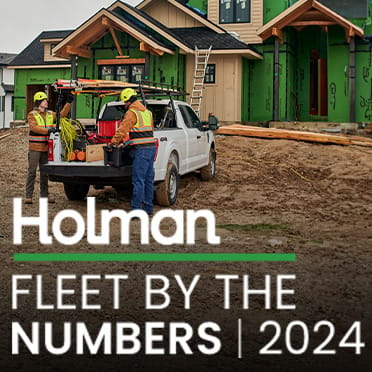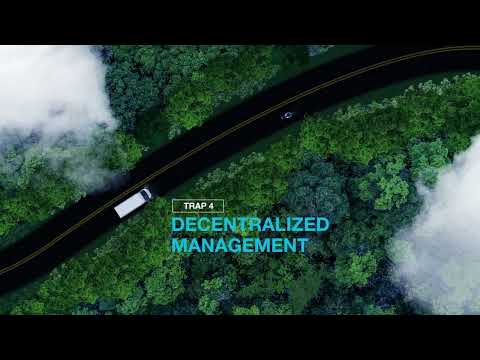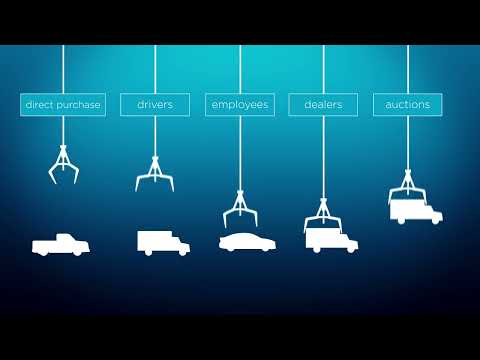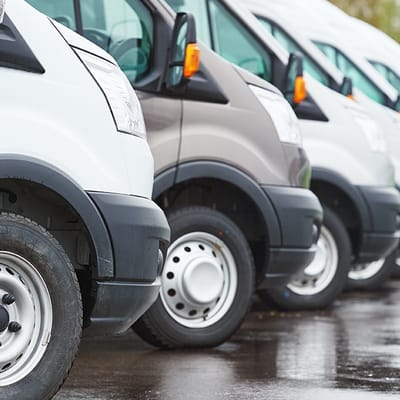- SolutionsWith a strategic solution that works for you and your business, you can unlock revenue-generating opportunities and begin managing your fleet as an investment.Overview
- About UsWhen Holman was founded in 1924, we set something positive in motion. Our consistent focus on people and our commitment to integrity make us who we are today.Overview
 Join Our TeamWe’re not just in the automotive business, we’re in the people business. Join us for the ride.Browse Careers
Join Our TeamWe’re not just in the automotive business, we’re in the people business. Join us for the ride.Browse Careers
Avoiding Staged Accidents
Holman Marketing
September 22, 2021

Imagine this: One of your drivers is on the road in a company van when suddenly a vehicle pulls in front of them and abruptly brakes. To make matters worse, another vehicle simultaneously pulls up alongside the company vehicle, blocking it from swerving to avoid an accident and causes a collision. Thankfully no one is hurt, but your company vehicle has been damaged and you’re looking at insurance liabilities. The bad news is that your driver may have been a target and victim of a staged accident.
Staged accidents are a threat to all drivers, but they are especially dangerous for companies with fleet vehicles. These scams can lead your company into financial dangers while putting your drivers at risk. As a fleet manager, you need to have a plan for not only addressing the problem but also preventing these incidents.
What are staged accidents?
Staged crashes involve criminals causing unsuspecting drivers to collide with them so they can submit exaggerated claims against the victim’s insurance company, going so far as to file a lawsuit in some cases. Fleets are often targeted because they are more likely to be fully insured.
So what should you do to avoid becoming the victim of staged accidents?
Monitoring driver behavior
The best defense against staged accidents is to drive carefully and be aware of your surroundings. Educating and monitoring proper driver behaviors can be a huge benefit. Training drivers to manage the space around their vehicle is crucial, and leaving enough room in front of them can help, since many drivers travel too close and don’t have enough room to brake in an emergency. You can also implement good driver behavior by educating your drivers on distractions such as music or cell phone usage.
Driver education and awareness
It’s important that you work with your drivers to identify potential staged situations:
T-Bone accident: In this scenario, the predator will wait for a vehicle to drive through an intersection and then accelerate to T-bone it. When the police arrive, an accomplice is used as a witness claiming the company vehicle was at fault.
The wave: In this scenario, the criminal driver will target a vehicle trying to switch lanes and wave the unsuspecting driver ahead as a courtesy. When the driver changes lanes, the criminal driver will accelerate, colliding with the fleet vehicle.
Swoop and stop: In this scenario, the predator will quickly pull in front of the victim’s vehicle and abruptly brake in order to cause a rear-end collision. An accomplice will pull up alongside the victim at the same time, in order to keep the vehicle from swerving to avoid an accident.
Vehicle maintenance
Make sure your company vehicles are in good condition, especially the tires and suspension systems. Following best practices and keeping your vehicles properly maintained keeps them performing to the best of their ability, leading to better long-term ROI. You should also make sure you have reviewed or updated your insurance plans for the safety of your vehicles and your insured. Contact us today to make sure you’ve got the right coverage for your fleet.
Proper Protocol
Lastly, you should have a plan in place for what happens during or after a staged accident. Your drivers should contact the police as well as their insurance company as soon as possible after the incident.
Drivers should document as much detail of the scene, occupants, and damage as possible without putting themselves at risk.
It’s never a bad time to review your coverage to ensure your fleet is insured to protect you from liabilities that can stem from accidents – staged or otherwise. Holman is here to help! Contact us today.
The above is meant as general information to help you understand the different aspects of insurance. The content of this blog is not an insurance policy, does not refer to any specific insurance policy, and does not modify any provisions, limitations, or exclusions expressly stated in any insurance policy. In order to fully understand the coverages and other features of a specific insurance policy, we encourage you to read the applicable policy and/or speak to a Holman Insurance Services agent. Coverages and other features vary between insurers, vary by state, and are not available in all states. Coverages are subject to the terms and conditions of the actual insurance policy or policies involved in a claim. References to average or typical premiums, amounts of losses, deductibles, costs of coverages/repair, etc., are illustrative and may not apply to your situation. We are not responsible for the content of any third-party sites linked from this page.
Related Resources
Explore more related industry news, insights, and developments.









